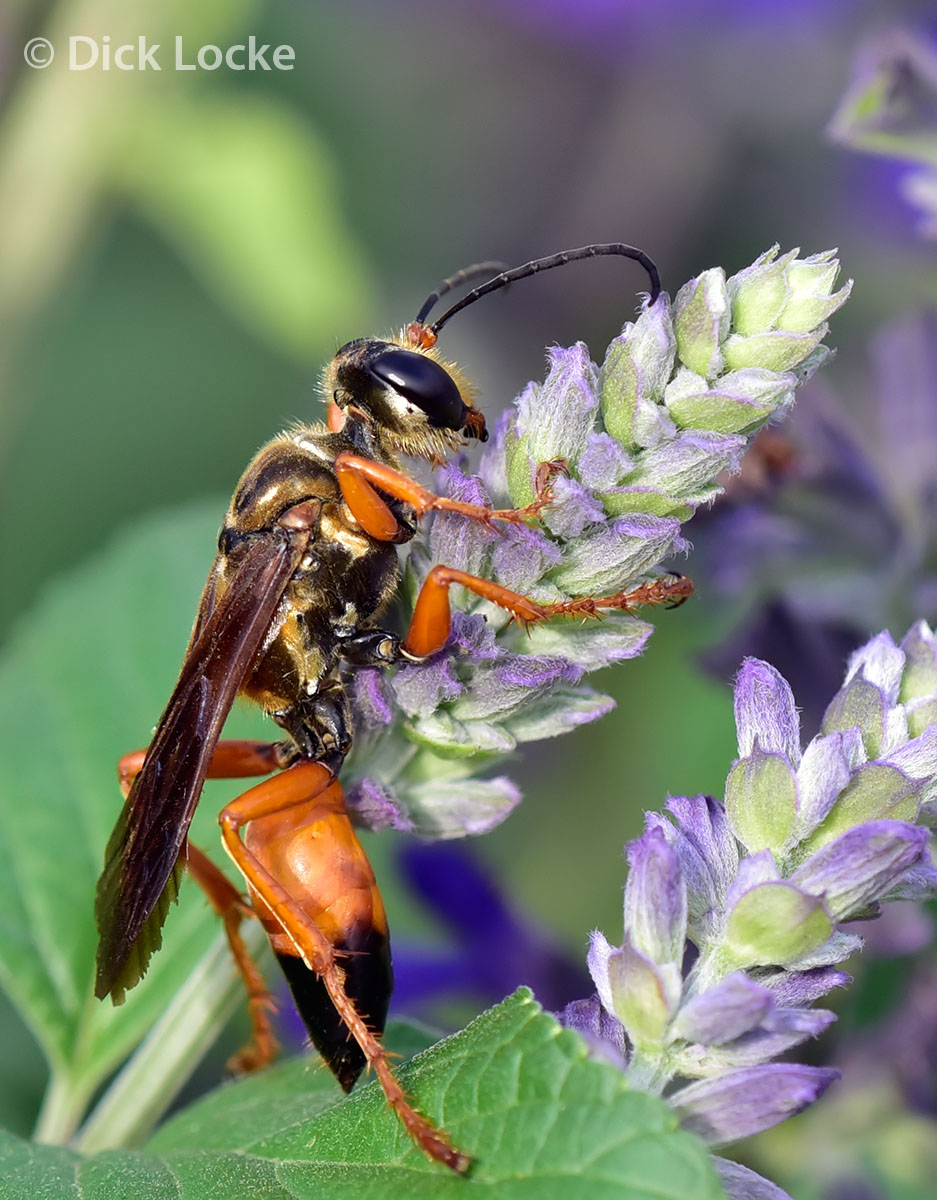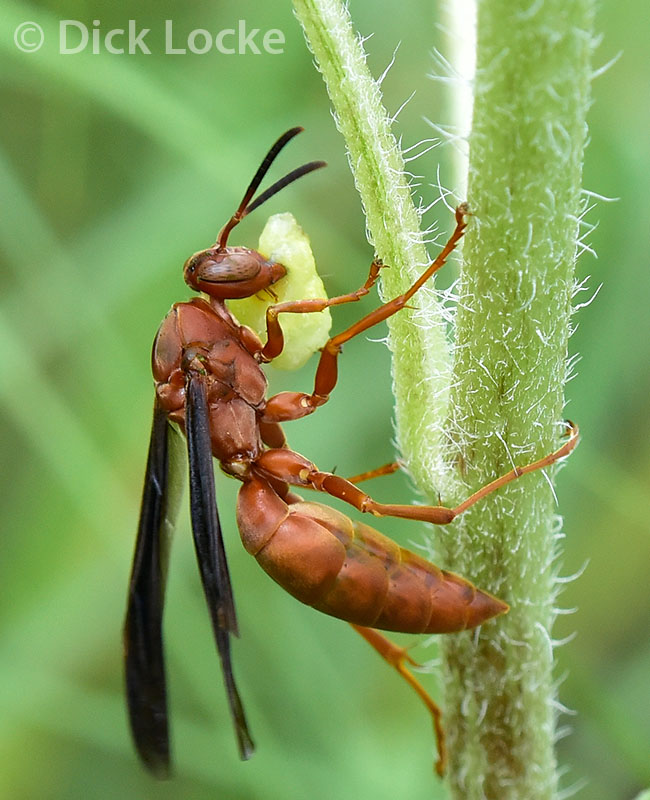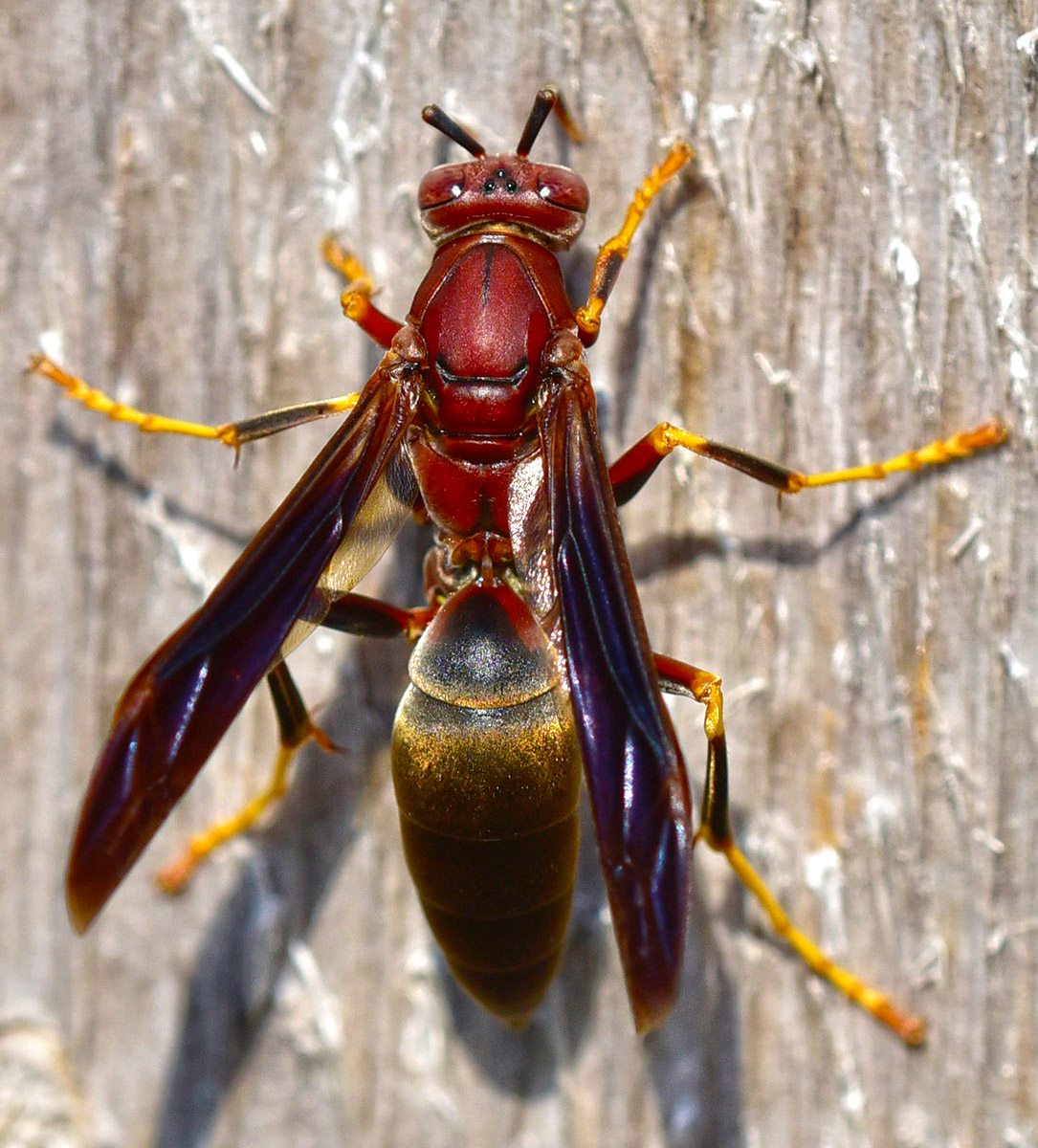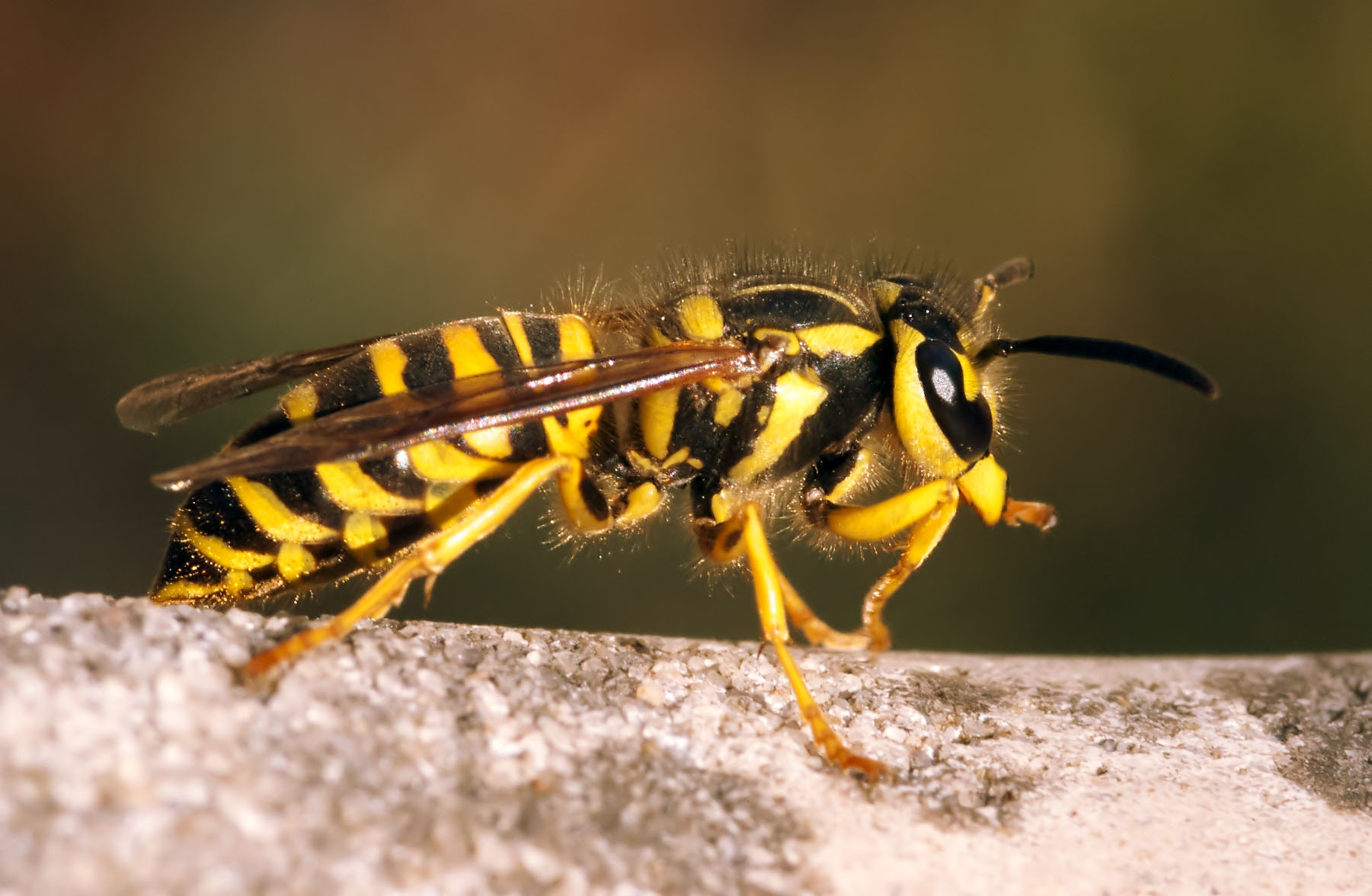
Paper Wasp from the Davis Mountains (Big!) - Polistes dorsalis
This is my wasp picture page, new as of late 2015 and majorly updated January 2016. Most of my newer wasps are from the back yard and are going to this dedicated page. Thanks to the folks at the bugguide.net, and specifically to Dr. Matthias Buck of Royal Alberta Museum, Edmonton, for help identifying many of the species on this page through bugguide and email. One of Dr. Buck's works is at this link.

This was from the Chihuahuan Desert Nature Center and Botanical Gardens outside of Fort Davis, TX. Nikon D810A, 200mm macro lens at f7.1, 1/1000s, ISO 640. This is the bugguide photo.
Other common names for Polistes include Paper Wasp, Paper Nest Wasp (any member of genus), Northern Paper Wasp, Golden Paper Wasp (both for P. fuscatus), Red Wasp (P. annularis or carolina), Common Paper Nest Wasp (P. exclamans), Texas Paper Wasp (P. apachus) according to the Bug Guide.

Nikon D810A, 200mm macro lens, 1/2000s at f7.1, ISO 640. Same location as previous image. Dr. Matthias Buck: ...(this image) is a different species (Polistes aurifer, also male), note the black antenna tips.

Female Sand Wasp Bicyrtes quadrifasciatus from 8/20/2016, a new one for me. There's a surprising variety of bees and wasps in the back yard. Here's the bugguide.net link.

November 2016 from the backyard. This is a big colorful guy! Nikon D750, 200mm lens, f8, ISO 1600, 1/1000s with fill flash. Updated with latest bugguide ID.

From the botanical gardens as mentioned previously, 2015 trip. This looks like it may be different from the Polistes aurifer. It was one of a group of wasps (most of which were Polistes dorsalis) going for a cactus. I think the red on it's back is part of the cactus and not a mark.
Dr Buck shared the following: Excellent find! First image of a male of this subspecies on Bugguide! Please keep sharing your images!
This link takes you to the bugguide.net image and notes for the above.

A paper wasp (Polistes) doing something to what I think is an oak tree gall. It's from the Davis Mountains 2015 trip. This was hard to shoot being under a tree and dark; Nikon D810A, 200mm macro, f4.2 (wide open), 1/640s (+1 and 2/3 exposure) ISO 1000. I'll was very confused about what it might be doing, until Dr. Buck weighed in! Bug Guide link here.
Thanks to Dr. Buck, who advises: Polistes comanchus comanchus (male): image titled 'Paper Wasp and Gall (?)'. I assume this was an oak gall. Some galls exude sugary fluids that are highly attractive to wasps. This male is feeding. Great shot!

The shot above is from July 2016 in the backyard. The wasp is making pulp out of chewed-up plant leaves, I believe. This is a female Polistes (Paper Wasp, carolina or rubiginosus).

Nikon D750 Camera, 200mm f4 micro lens, 1/640s, f8, ISO 640. This is from the backyard (Houston TX area). Thanks Dr. Buck for identifying these as female Polistes metricus.

Dr. Mattias Buck says: Polistes carolina or rubiginosus (female, one image): the entirely brick red species.
 for less-cropped version of above
for less-cropped version of above

Polistes metricus, female, per Dr. Buck.
I caught some pictures of this guy busily chewing on our fence. Gil postulated: The wasp that is eating your wood post plans to chew the wood and make it into its hanging nest. It is a Paper Wasp, family Vespidae, subfamily Polistinae. Iíll bet you 50 cents that it is the Red, or Carolina, Paper Wasp, Polistes carolina, a species native to the eastern U.S.
Image Detail: Nikon D750 camera, 200mm f4 ED macro, f8, 1/2000s, ISO 640, matrix metered, hand-held.

Same wasp as above & same equipment; this time f6.3 and 1/2500s. I used Photoshop CS6's HDR toning to jazz up these two wasp pics to a nice effect I think.


From Indiana, 8/2008. Jonathan advises: It is a "cicada killer" Sphecius speciosus. The females dig burrows in the ground, hunt cicadas, drag them down the burrow, lay an egg in them and cover the entrance. The larvae feed on the paralyzed cicada. They are some of the largest wasps. Cicadas also make for good meals for anoles. Nikon D200 and Nikon 105mm f2.8 macro lens.


Wimberley, TX, 2010. Matthias from bugguide.net says authoritatively it is a Vespula squamosa in 2016.
Earlier, Gil though this was a common yellowjacket, Vespula vulgaris. However Dr. Matthias Buck advised in 2016 that: What was formerly (until 2010) considered vulgaris in North America is actually different from the European species vulgaris and is called Vespula alascensis (http://bugguide.net/node/view/14087 has a little more info). Alascensis is native to North America but does not occur in Texas. The only introduced (and invasive) yellowjacket in North America is Vespula germanica. It, too, does not occur in Texas.
More Wimberley bug pictures are here.

Images Copyright ©
by Dick Locke. All Rights Reserved.
Image Use Information